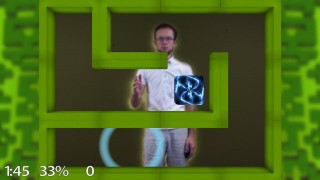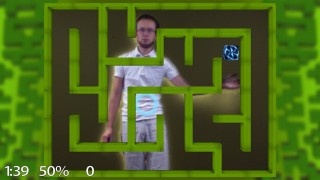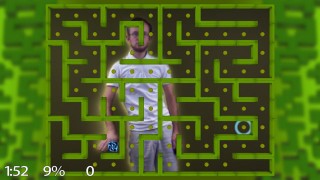
 |
 |
 |
BRIEF DESCRIPTION
In the game Maze the patient’s task is to push an object through a virtual maze. Specifically, the patient has to move a virtual cube towards the point of destination appointed somewhere in the maze. The complexity of the maze is controlled by the therapist.
RECOMMENDATIONS AND POSSIBILITIES
The module is designed to help the patient learn functionality and economy of movements. The exercise improves concentration, spatial vision and prediction, as well as the fitness of the upper limbs. The patient can perform the exercise either sitting or standing. The amount of time devoted to perform movements and the speed of movements are irrelevant for this type of exercise.
PATIENT REQUIREMENTS
In order to perform this exercise the patient needs to have either full, or only slightly limited range of motion in the upper limbs. It is also required that the patient understand and is able to follow simple instruction.
TASKS
The patient’s tasks are to find in the maze the path leading from the starting point to the point of destination and to move the given object along this path. The patient moves the object by pushing it with her/his hands in the chosen direction. The tasks may be either very simple or very difficult, depending on the size of the maze. The path of movement, the starting position of the object, the point of destination, and the layout of the maze are randomly generated and therefore different every time the exercise is started. In this way, the patient cannot learn the correct path by hard but has to stay focused and keep thinking about the task.
DIFFICULTY LEVELS
The difficulty of the maze depends on its size. There are 3 sizes to choose from: the small, medium, and the big maze. In order to make the task easier for the patient, the module has a few options of giving hints. For instance, the therapist can check the box ‘show the way’ (in the therapist’s panel) and put in the maze green pebbles showing the optimal path to the target point. Every time the patient pushes the cube in the right direction, the nearest pebble disappears and every time the patient pushes the cube in the wrong direction, there appears an additional pebble to show the optimal path from the cube to the target point.
DATA AND REPORTS
The system saves data concerning the level of the patient’s activity during the exercise and how this activity corresponds to the patient’s results. The system also counts the number of the cube’s movements at intervals of 10 seconds. These kinds of data allow to determine whether the patient understands the task, whether s/he is mentally involved in the task or performs the exercise without any reflection, and whether the task is difficult enough.
HINTS AND TIPS
If the patient is standing too close to the screen so that s/he reaches beyond it with her/his hand, the therapist may move the ‘Kinect-zoom’ slider to the lower value instead of moving the patient away from the screen.
More information


This is a modern approach to rehabilitation, which is fun for the patient. This form of a session, from the psychological point of view, brings many positive aspects, which result in stronger effects - desired in terms of improving the functioning of the people undergoing the rehabilitation. Find more Kinect Rehabilitation




